The 627
Converting a regular six string guitar into a hybrid, seven-string.

Converting a regular six string guitar into a hybrid, seven-string.
Long story short: my interest in playing a hybrid guitar (bass + guitar as one instrument) got renewed during the beginning of the pandemic when playing with people in NYC was literally a choice between life and death.
Although, I have experimented in the past with 8-string, and 7-string guitars and various custom modifications, I never found myself falling in love with them. Adjusting to a different string set and tuning wasn't the issue. More strings meant many new possibilities but also a loss of expressiveness and fluency with a musical vocabulary built through the years. It felt like learning a new language, and any language takes many years to master.
So, I started thinking creatively. I sketched out what I wanted: a regular guitar that allowed me to play an emulated bass and guitar combo and a comfortable range in each instrument. How would that even work? Well, if it meant that some of the ranges overlap somewhere in the middle -- that's okay -- many melody lines in that shared range are often played in unison anyway. It's a good compromise.
Once I came to terms with that approach, the experimentation began. I designed a simple electronic circuit that utilizes a Seymour Duncan Duckbucker specialized pickup to allow signal splitting into two ranges of three strings each. This circuit has only one volume control via a 500K pot for a darker, warmer sound, its own 1/4" jack and the entire unit is grounded separately. This signal is sent through a bass synth petal and other effects in order to emulate a 3-stringed bass.
Then, I designed a second, more traditional, circuit that treats the upper range of the Duckbucker as a single-coil pickup. A 250K push-pull pot, combined with a classical 5-way switch allows switching between humbuckers and single coil modes, therefore allowing for a wide range of sounds. A single tone control via a 250K pot and a 0.022µF capacitor for brighter sound is wired to apply to all three pickups.
Removing one of the two usual Stratocaster tone controls was necessary because I needed the existing space to accommodate both circuits under the same pick-guard without having to carve out parts of the guitar body. I ended up drilling only one additional whole in the pick-guard only, and although the controls are a little crammed, they're easy to handle. Besides, I think they look cool that way.
Below is a schematic of the circuits used for v1.
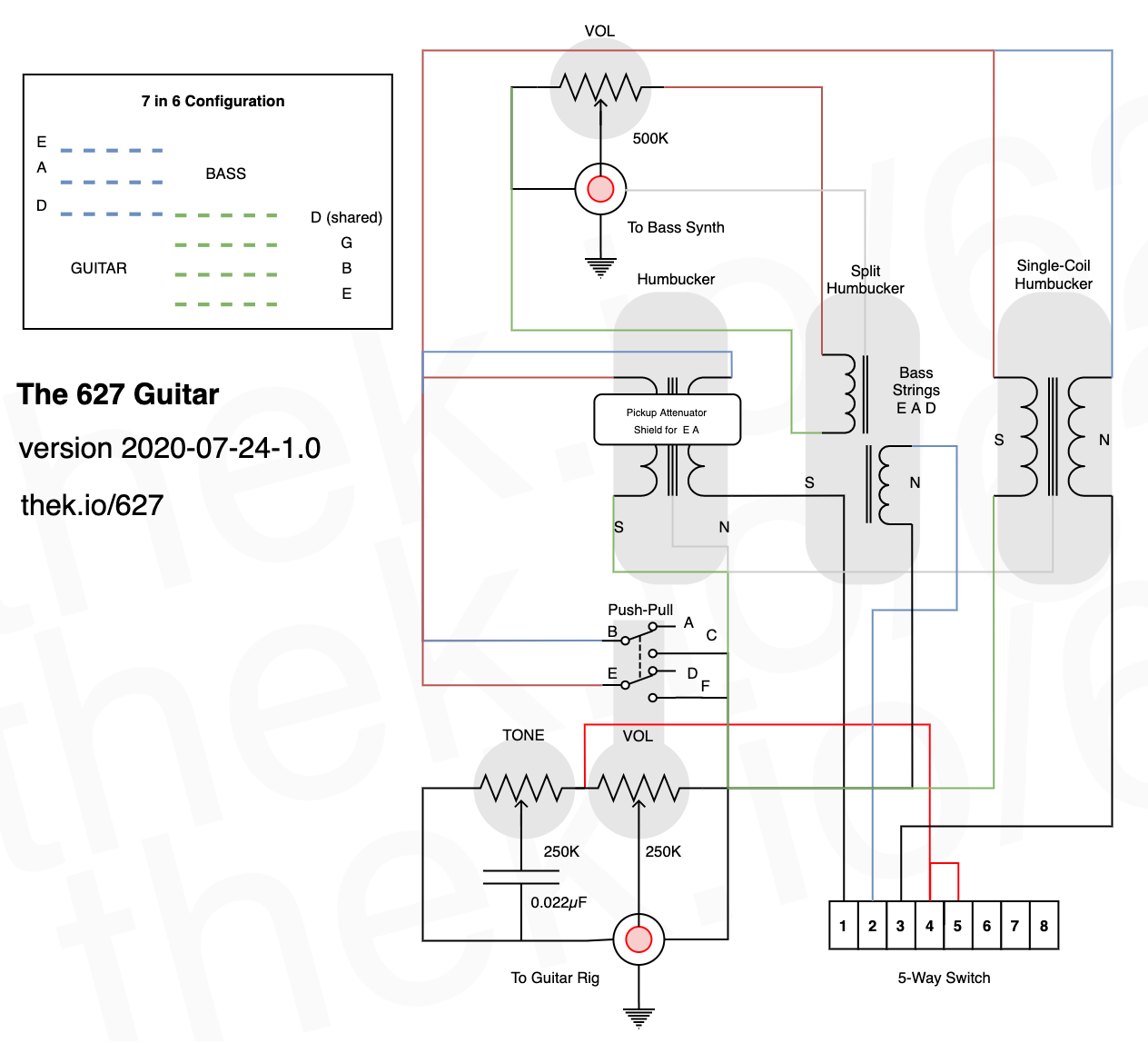
The new version 1.0 of the electronics wired and passing the tests before assembly.
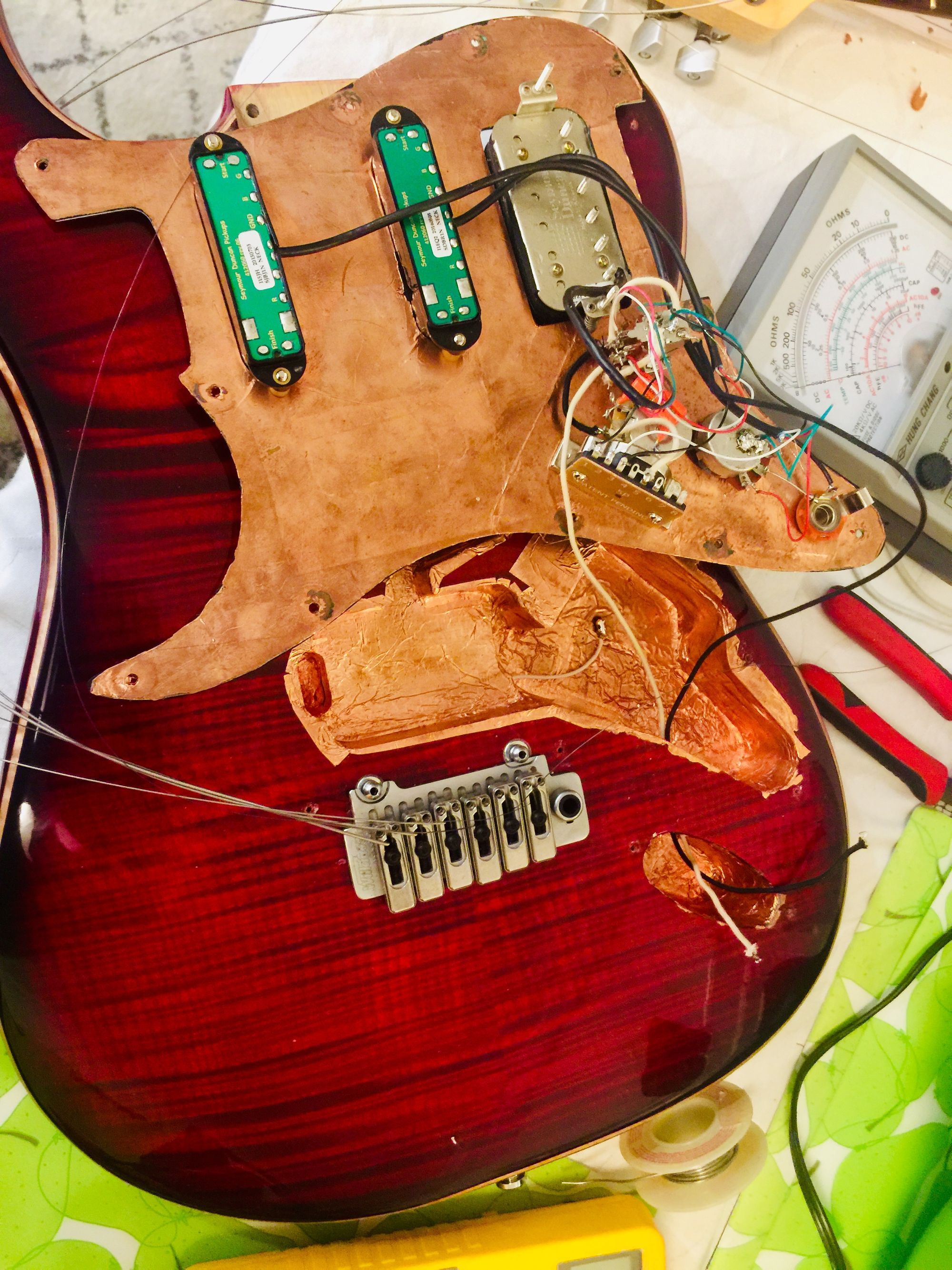
And finally the first test drive.

Lastly, I trimmed two pieces of stainless steel and placed:
- the first on top of the two bridge humbucker magnets in order to attenuate the pickup signal signal for the E and A strings and create a sound separation between the bass and guitar strings.
- the second (optional one) covering the higher four strings of the middle pickup to absorb any left over bleeding from these strings in the bass signal
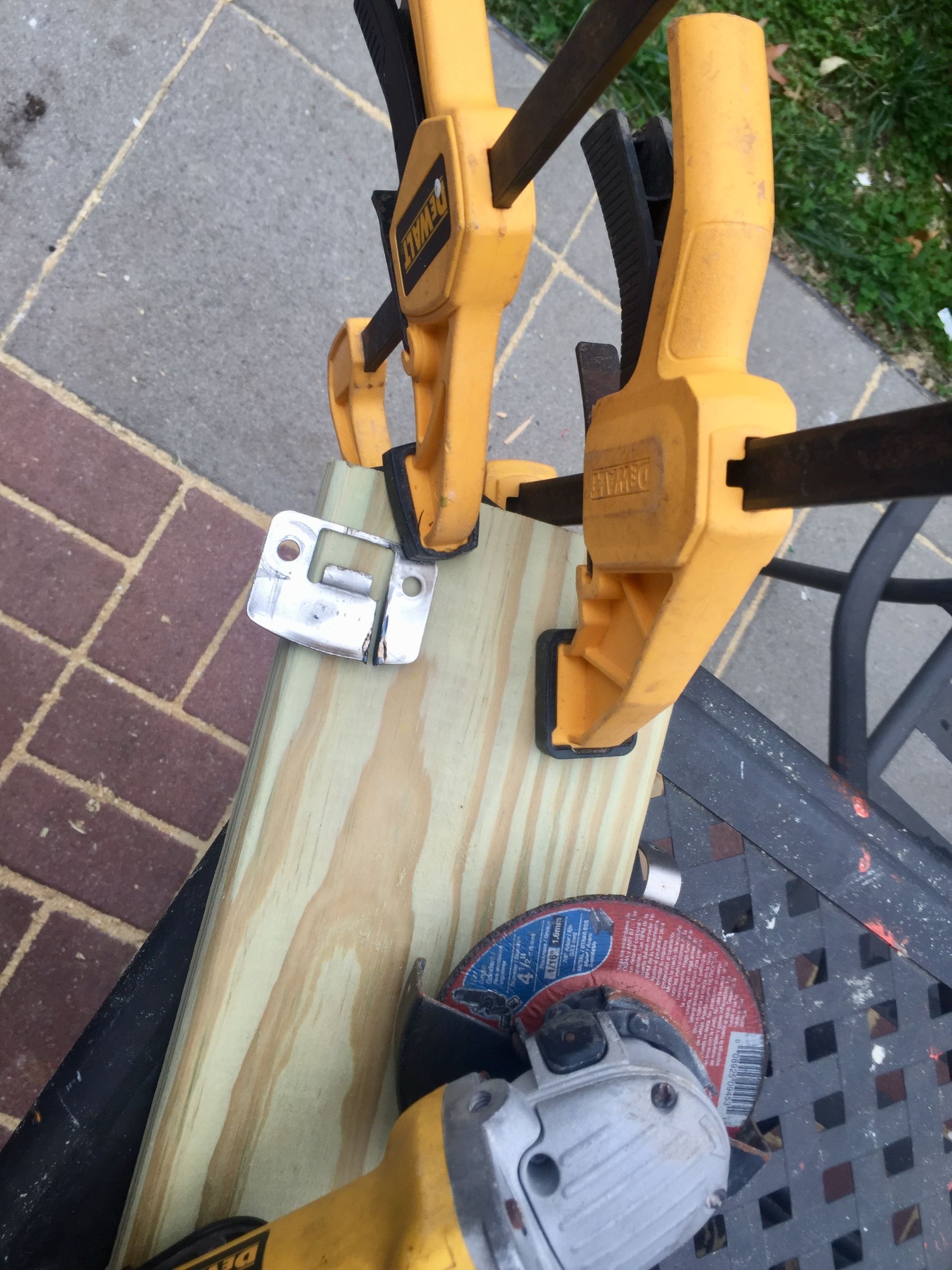
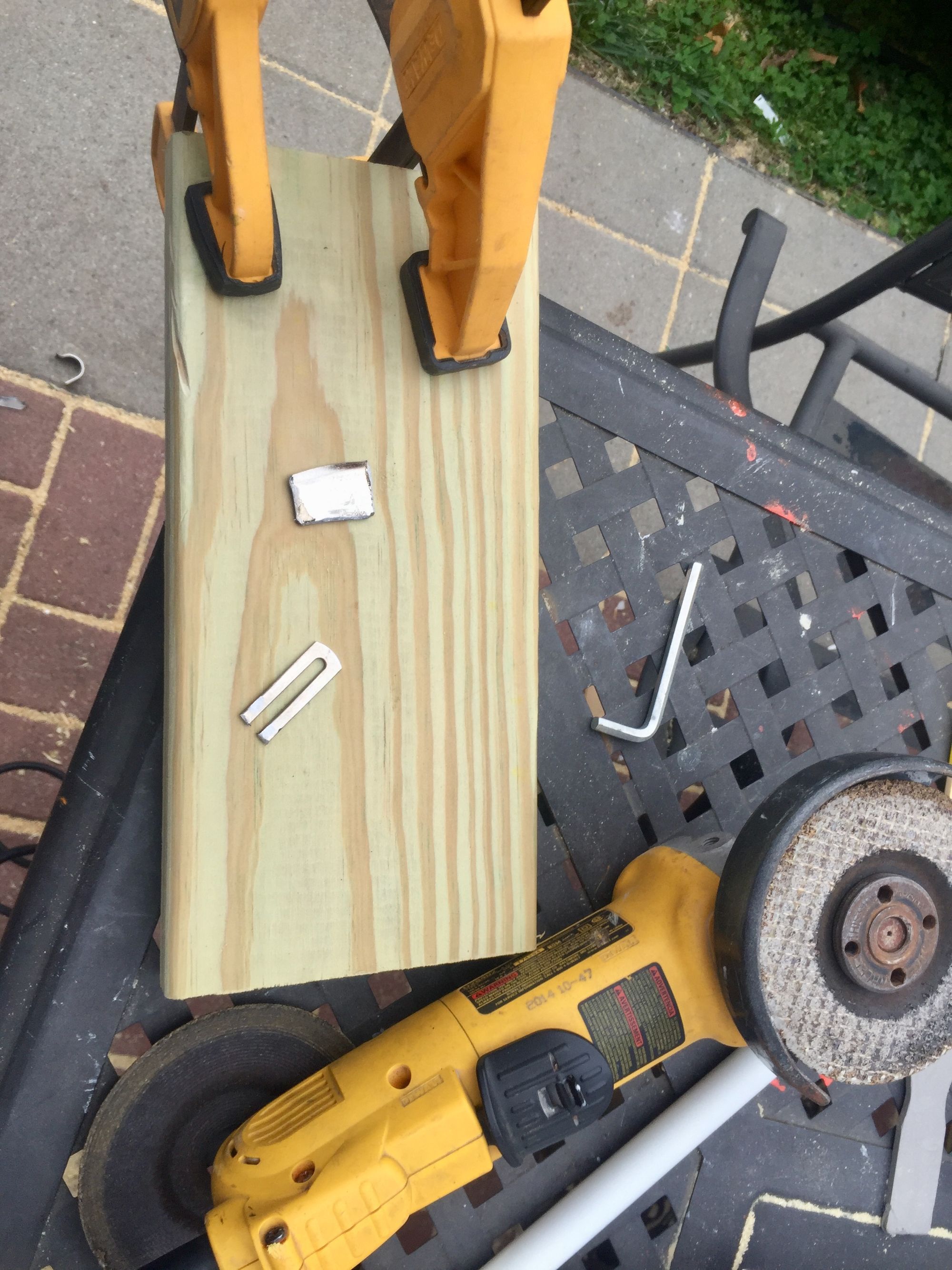
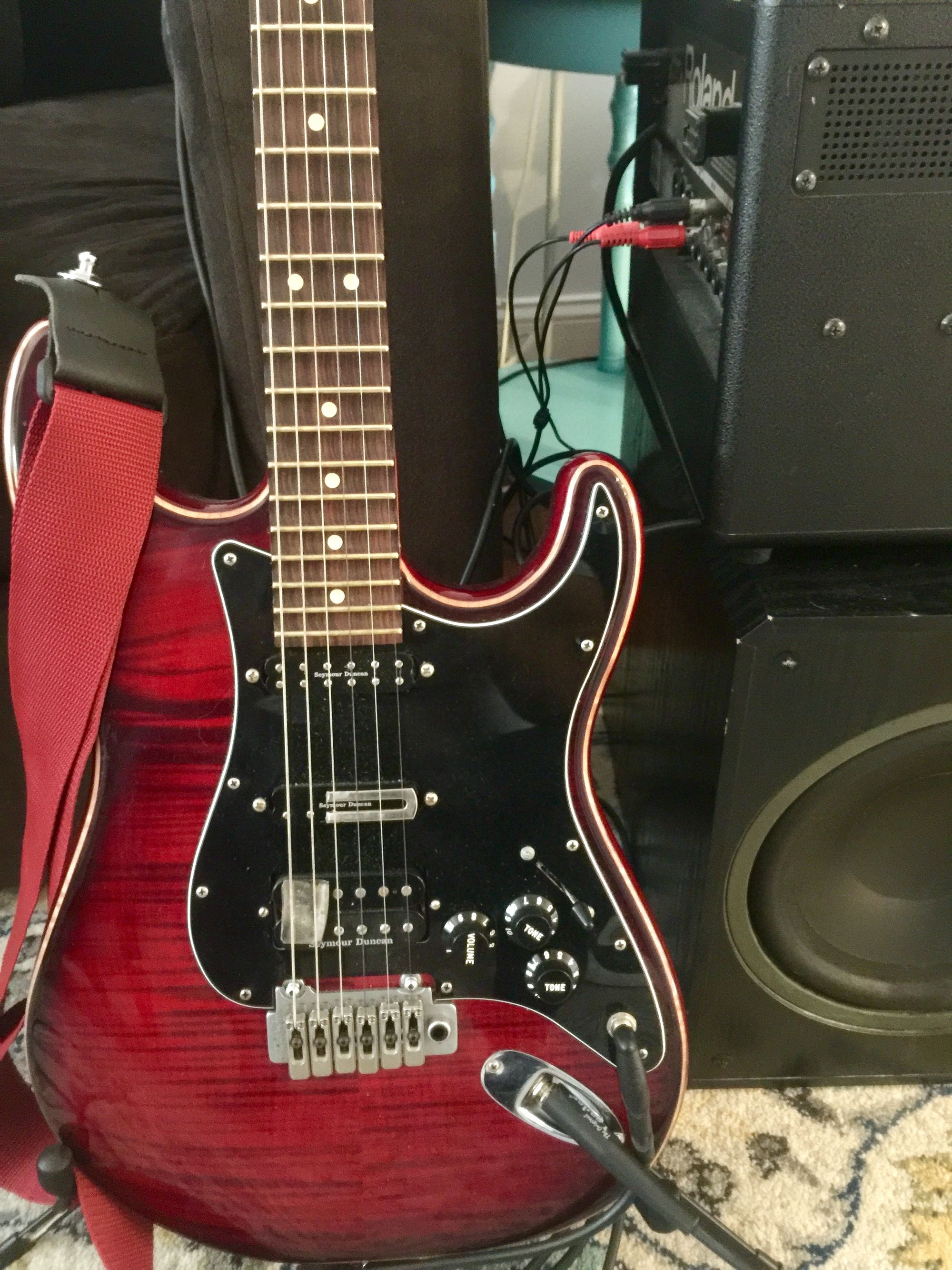
This setup allows playing in hybrid+overlapping mode: 3 strings of bass through the middle pickup lower range and its dedicated circuit, and 4 strings of guitar through the unattenuated bridge humbucker. Hence the name: 627 (six to seven). The overlap is the intentional compromise and it enables expressiveness on both instruments.
And with foot drums...